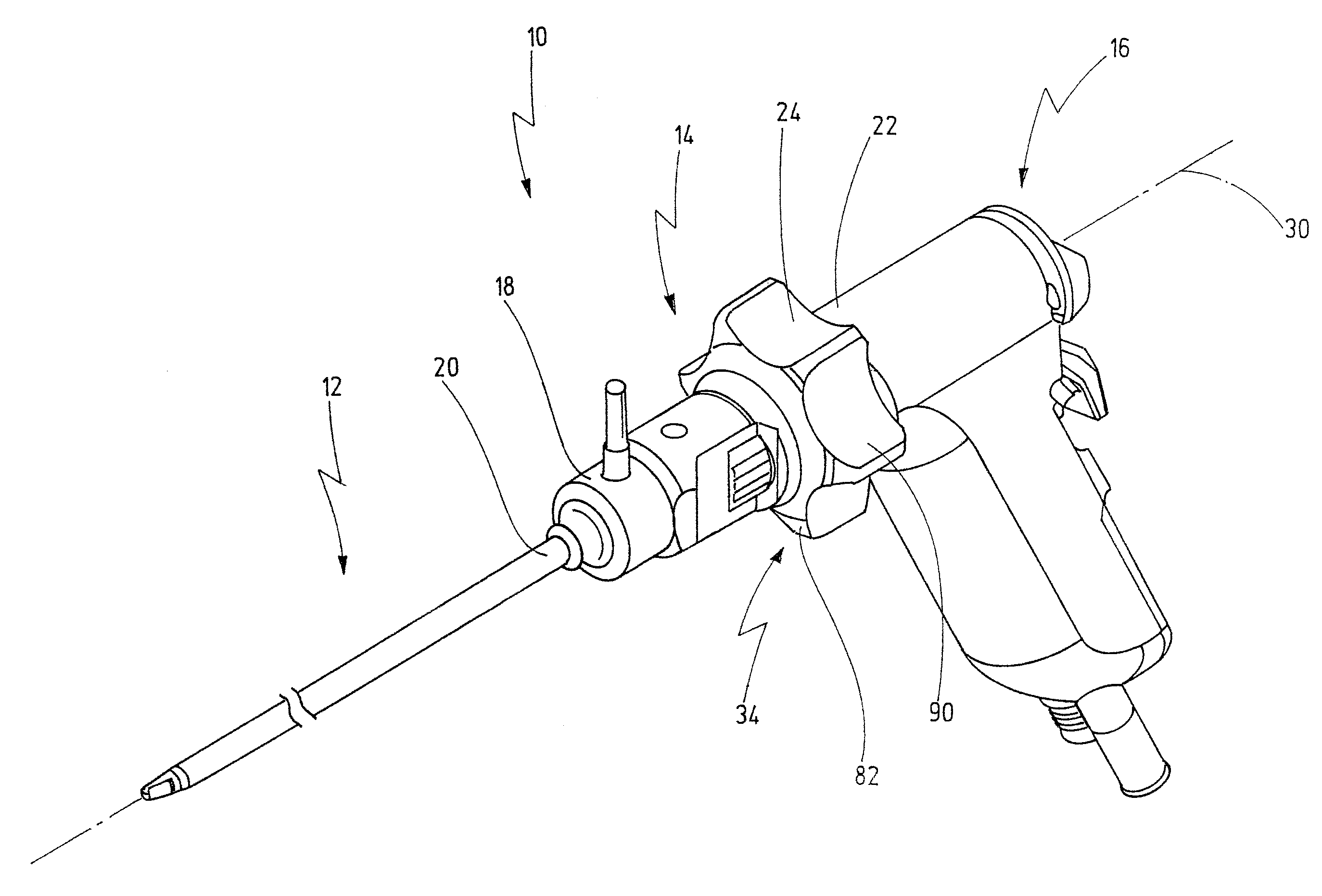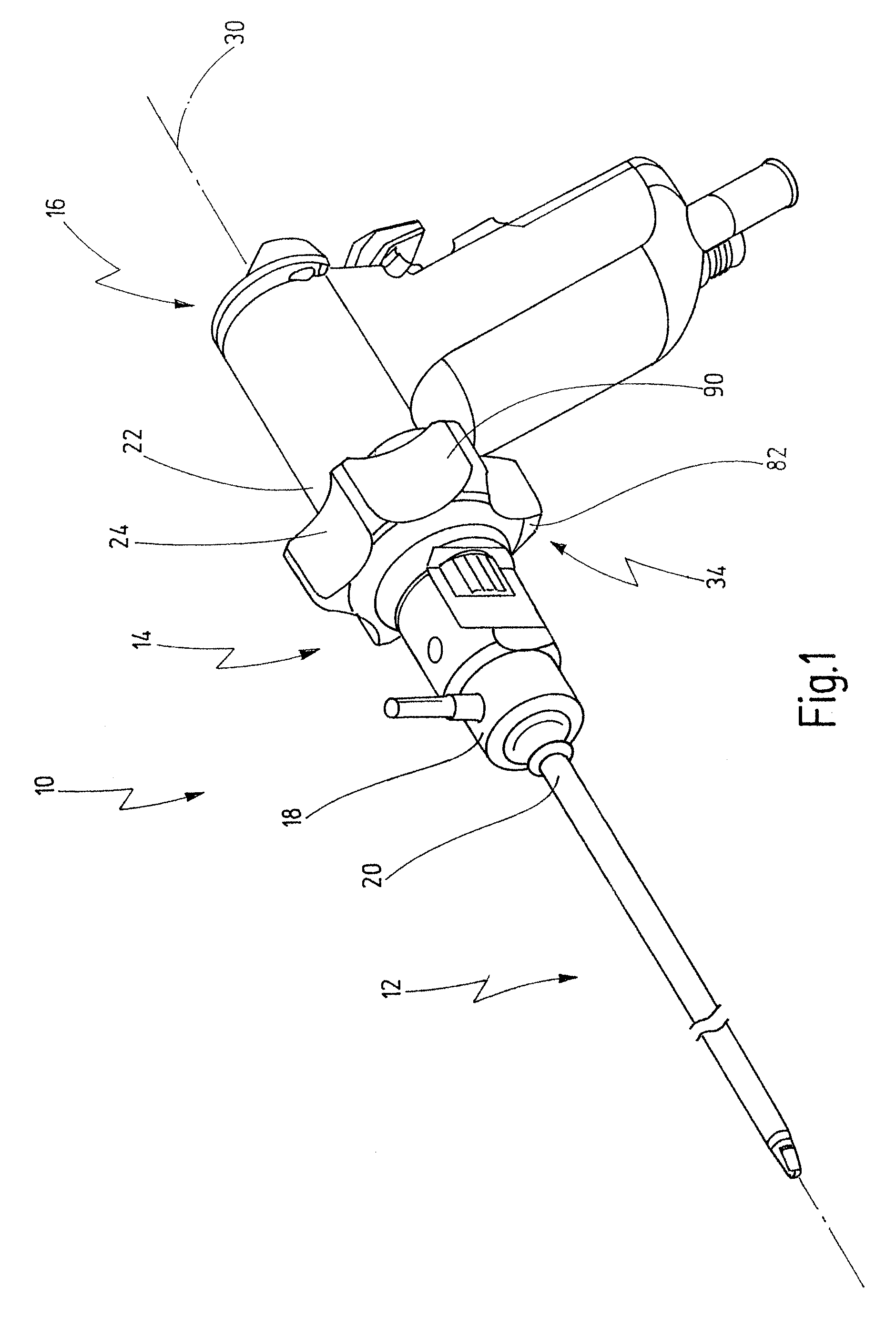Medical Instrument
a technology for medical instruments and instruments, applied in the field of medical instruments, can solve the problems of medical instruments, medical instruments not being able to be operated with one hand by users, and the proximal end region of the outer shaft, and achieve the effect of being particularly cost-effectively manufactured
- Summary
- Abstract
- Description
- Claims
- Application Information
AI Technical Summary
Benefits of technology
Problems solved by technology
Method used
Image
Examples
Embodiment Construction
[0055]FIG. 1 illustrates a medical instrument provided with the general reference numeral 10. Further details of the medical instrument 10 are shown in FIGS. 2 to 9C.
[0056]The medical instrument 10 is used, for example, in the field of minimally invasive surgery during a laparoscopic procedure for atrophying sectioned tissue of a patient or for removing diseased tissue of the patient.
[0057]The medical instrument 10 has a shaft 12, a coupling element 14 and a handle 16. A distal end region 18 of the coupling element 14 is connected to a proximal end region 20 of the shaft 12 and a distal end region 22 of the handle 16 is connected to a proximal end region 24 of the coupling element 14.
[0058]As shown in FIG. 2, the shaft 12 is designed in two parts, and it has a respectively tubular inner shaft 26 and outer shaft 28. The inner shaft 26 is housed in the outer shaft 28 and designed such that it can rotate relative to the outer shaft 28 about a longitudinal axis 30 of the medical instrum...
PUM
 Login to View More
Login to View More Abstract
Description
Claims
Application Information
 Login to View More
Login to View More - R&D
- Intellectual Property
- Life Sciences
- Materials
- Tech Scout
- Unparalleled Data Quality
- Higher Quality Content
- 60% Fewer Hallucinations
Browse by: Latest US Patents, China's latest patents, Technical Efficacy Thesaurus, Application Domain, Technology Topic, Popular Technical Reports.
© 2025 PatSnap. All rights reserved.Legal|Privacy policy|Modern Slavery Act Transparency Statement|Sitemap|About US| Contact US: help@patsnap.com



